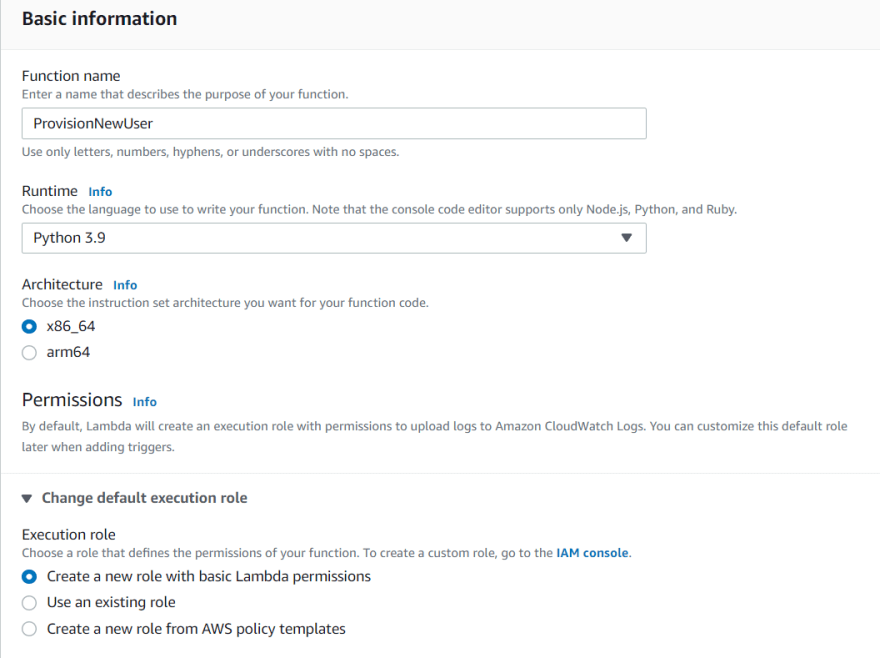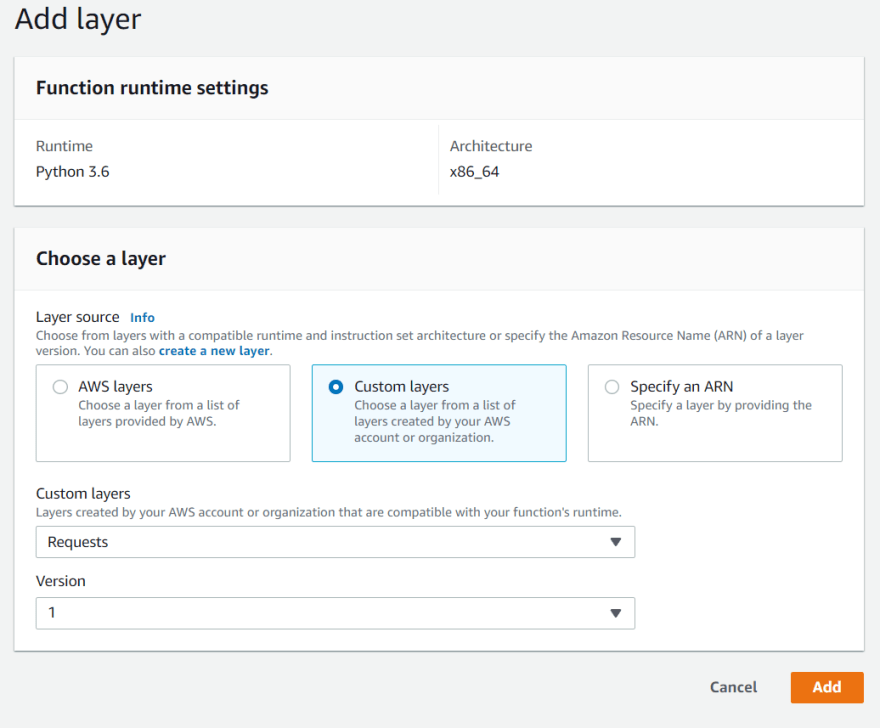26
Creating An Automated Personal Finances Dashboard With AWS - Part 2 (Request Lambda)
G'day folks, last time we spoke we covered the following:
In this post we're going to tackle the first obstacle, the Provision New User lambda.
Now these two lambdas could be packaged as a single lambda, with separate functions for each use case, however for the sake of simplicity we are going to split these out, and in the future they will probably end up together in some fashion.
- Sends a GET request
- Manually triggered
- Normally only used once or when data needs to be completely refreshed
- Receives a POST request
- Triggered every time a transaction is registered through a webhook (we'll get to that later)
- This is the core of the automated dashboard and will provide real time data
Sounds simple enough right?
Let's crack on with it.

- This code filters through the response and grabs all of the relevant info, putting it all into a dictionary of arrays
import json
import os
import requests
api_token = os.getenv('api_token')
api_url_base = 'https://api.up.com.au/api/v1/'
headers = {'Authorization': 'Bearer {}'.format(api_token)}
def create_list(api_url):
response = requests.get(api_url, headers=headers)
if response.status_code == 200:
data = []
data.append(response.json().get('data'))
if response.json().get('links').get('next'):
token = response.json().get('links').get('next')
while token:
response = requests.get(token, headers=headers)
data.append(response.json().get('data'))
token = response.json().get('links').get('next')
if token:
print("Processing token: {}".format(token))
else:
print("Finished processing tokens")
return data
else:
print(response.status_code)
def create_csvDictionary():
api_url = api_url_base + 'transactions'
data = create_list(api_url)
csvDictionary = {'id' : [], 'description' : [], 'value' : [], 'category' : [], 'parentCategory' : [], 'createdAt' : []}
for array in data:
for transaction in array:
if 'Transfer' in transaction.get('attributes').get('description'):
continue
if 'transfer' in transaction.get('attributes').get('description'):
continue
if 'Cover' in transaction.get('attributes').get('description'):
continue
if 'Round Up' in transaction.get('attributes').get('description'):
continue
if float(transaction.get('attributes').get('amount').get('value')) > 0:
continue
else:
csvDictionary['id'].append(transaction.get('id'))
csvDictionary['description'].append(transaction.get('attributes').get('description'))
csvDictionary['value'].append(transaction.get('attributes').get('amount').get('value')[1:])
if transaction.get('relationships').get('category').get('data'):
csvDictionary['category'].append(transaction.get('relationships').get('category').get('data').get('id'))
else:
csvDictionary['category'].append('Uncategorized')
if transaction.get('relationships').get('parentCategory').get('data'):
csvDictionary['parentCategory'].append(transaction.get('relationships').get('parentCategory').get('data').get('id'))
else:
csvDictionary['parentCategory'].append('Uncategorized')
csvDictionary['createdAt'].append(transaction.get('attributes').get('createdAt'))
print(csvDictionary)
return csvDictionary
def lambda_handler(event, context):
create_csvDictionary()Our first roadblock! Our lambda doesn't have the requests library, how are we going to sort this one out?

pip3 install requests --target .\requests --no-user


Not Awesome - The lambda initially timed out because there is so much data there (2 years worth of transactions)
Next post will be covering the Webhook (event based) lambda function and the corresponding API gateway and endpoint that will be required. Can't wait!
26
